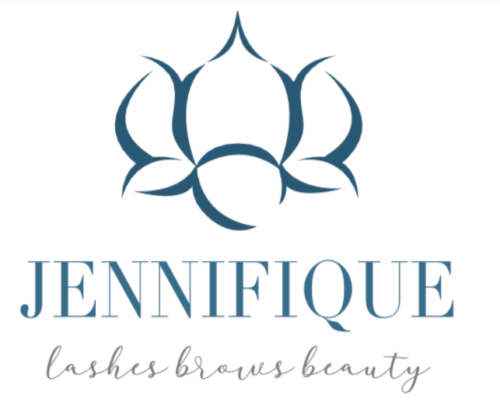Microdermabrasion Facial
(1 hour appointment)
Microdermabrasion treatments use a minimally abrasive instrument to gently sand your skin, removing the thicker, uneven outer layer, and has many benefits.
This type of skin rejuvenation is used to treat light scarring, discoloration, sun damage and stretch marks.

What microdermabrasion can do?
- Improve age spots and blackheads
- Improve hyperpigmentation (patches of darkened skin)
- Exfoliate your skin, resulting in a refreshed appearance
- Lessen the appearance of stretch marks
- Reduce fine lines and wrinkles
- Reduce or eliminate enlarged pores
- Treat acne and the scars left by acne
Microdermabrasion helps to thicken your collagen, which results in a younger looking complexion. Collagen is a protein in your skin which is abundant when you’re a child and makes skin appear taut and smooth. Collagen production declines as we age, resulting in looser, uneven skin.
How Many Treatments Are Needed?
How many treatments you will need is completely dependent on what your end goal is. Just one treatment will leave your skin looking bright and feeling buttery soft.
But if you’re looking for improvement of a specific skin problem, you really need a series of treatments to see any positive effects. The results you get from microdermabrasion are cumulative.
Generally, six to 10 treatments are scheduled seven to 14 days apart. The number and frequency of treatments vary depending on your skin’s needs and your skincare goals. The technician doing your procedure will let you know the best treatment schedule for your specific situation.
Who is not the ideal candidate for microdermabrasion?
Not that we wish to turn anyone away, but microdermabrasion is not right for everyone. Microdermabrasion is not intended for the treatment of major scars, deep wrinkles, facial warts or sagging skin. Anyone with uncontrolled diabetes or undiagnosed facial lesions are not idea candidates. Pregnant women should also avoid the treatment.
Does Microdermabrasion Hurt?
The thought of having crystals blasted onto your skin, or a diamond-tipped wand dragged across your face seems brutal, but it really isn’t as bad as it sounds. Some people liken the feeling to the rough lick of a cat’s tongue. Others describe it as a gritty facial massage or report feeling just minor tugging on the skin.
However it’s described, you needn’t worry. Because it works on just the surface layers of the skin, microdermabrasion isn’t painful.
If your technician is being a bit heavy-handed for your liking, let them know. Your microdermabrasion treatment should not be uncomfortable.
A Word From Jennifique Beauty
Microdermabrasion is a very safe procedure for most people (although there are some people who should not have a microdermabrasion treatment). Microdermabrasion is a valuable skincare procedure but it isn’t a miracle cure for all problems. It won’t treat deeper lines and wrinkles, or acne scars.
Prior to treatment, talk about your skincare goals and expectations so that you and your technician are on the same page. This will ensure you walk away from your treatment happy with the results.
Pre – Microdermabrasion Instructions:
- Do not use Retin-A or other exfoliating creams 24 to 72 hours (1 to 3 days) prior to your treatment.
- Avoid sun tanning or tanning creams/sprays for at least a week before treatment
- You must NOT have recently had laser surgery or used Accutane
- Candidates who have had a recent chemical peel or other skin procedure, such as collagen injections, should wait two to three weeks before undergoing microdermabrasion.
- Prospective patients should also refrain from waxing or tanning the skin to be treated for a few weeks prior to microdermabrasion treatment.
- Wash your face and neck with a non-oily, non-soap based cleanser before each scheduled treatment.
Post – Microdermabrasion Instructions
To maximize microdermabrasion recovery time and results, it is important to follow all post-procedure instruction below:
- Keep the new skin clean and moisturized
- Anti-inflammatory creams or cold compresses may be used as necessary
- Use a gentle cleanser.
- Trauma such as scratching or picking the treated area should be avoided.
- It is important to avoid irritatig the treated skin with harsh chemicals, rubbing or tanning for one week.
- Avoid staying in the sun for at least 7 days after the microdermabrasio treatment to prevent UV rays from damaging your skin which slows down the recovery.
- Patients who absolutely cannot avoid sun exposure should use a broad-spectrum sunscreen with an SPF of 30 or higher.
- Do not use glycolic, alpha hydroxy, beta hydroxy, retinol, benzyl peroxide or topical acne medicatios for 24-48 hours following treatment.
- You may resume prescription retinoid products (Retin A, Renova, Tretinoin, Avita, Alustra or other brands f Tretinoin and other prescription retinoid products (Adapalene, Avage, Differin, Tazorac, Tazarotene) 3 – 7 days after last microdermabrasion treatment or as instructed by your technician.
If you are receiving a series of treatments, do not resume any of these products until after you have completed your last medical microdermabrasion treatment.
